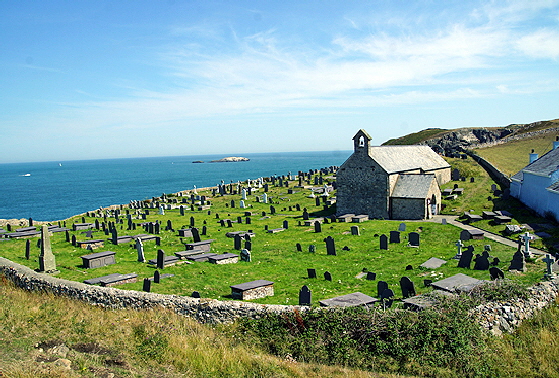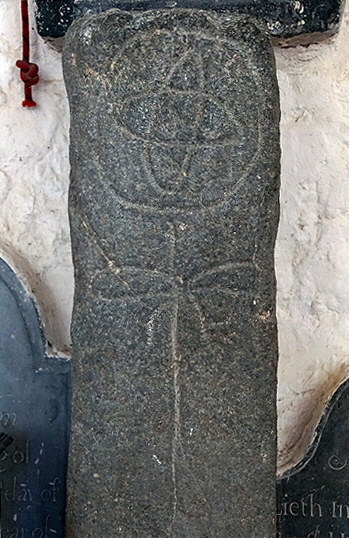|
Alphabetical List |
|
|
|
|
|
|
|
County List and Topics |
|
|
|
Please sign my Guestbook and leave feedback |
|
|
||||||||||||||||||||||
|
to convert the benighted English; many of whom. of course, had already been converted. To say the least, the lives of the early saints are the stuff of legend, hyperbole and wishful thinking so believe the story or not as you please. The reality today is of an ancient church in a remarkably beautiful and tranquil setting. This is not, of course, the church that Patrick did or didn’t build. That would have been of wood and thatch, wattle and daub and long-disappeared. The building we see is of the twelfth century. Dating a church as tiny as this is not easy because its architecture is rough and ready. Whoever built it was not following the current architectural orthodoxy. Indeed that is true of other Anglesey churches, We don’t even see that infallible pointer to Norman architecture the round headed door or window. Instead we must rely of a font which certainly does have a Norman design. But I must stop myself, here. Because although that font dates to the Norman period of British architecture, Anglesey was never ruled by William and his successors. In AD1098 the Normans were defeated on Anglesey by Gruffyd ap Cynan at the Battle of Aberlleiniog during the Norman invasion of Gwynedd. And here we need to digress again to remind ourselves that post-Conquest Wales was still comprised of a number of small but feisty Kingdoms that had messed with their English counterparts for centuries and who were nobody’s pushovers. Especially when, as at Aberlleiniog, King Magnus Barefoot of Norway just happened to be in the vicinity with his navy and was induced to lend a hand. I am sure that Welsh gold played a part in that somehow! So the font is not Norman really. But it is, as other European countries would call it, Romanesque and certainly post-Conquest. Which is, to all intents and purposes, the same thing. This is not an unaltered church, by any means. The chancel triple lancet window is typical thirteenth century in appearance (and in the interests of self-preservation I shy away from calling it “Early English” style!) The chancel arch too is (vaguely) pointed so we can probably point that to the thirteenth century too. I do say that without absolute conviction because this church is rather far from places of architectural fashion! The chancel is very long and wide and was either built over an earlier and shallower chancel or was completely new. It is interesting to note the way the chancel almost burrows into the hill. There was determination at work here. I am guessing that the original building had no windows on its seaward-facing north side and that any others were tiny. Why? The original church would not have had glass and this is no place for large unglazed windows! I would lay money that the original tiny windows were not replaced until glass became a viable economic option. In 1884 a series of renovations was funded by Lord Stanley of Alderley and Penrhos. Extraordinarily, the man was a Muslim convert who stipulated that Biblical scenes and characters must be avoided. This seems most peculiar. If a man was so liberal-minded as to fund a church of a religion he did not follow why would he then make strictures about the decoration? My own theory (others may have made it but if so I am not aware) is that he was guided by the Muslim convention that Mohammed the Prophet must never be portrayed - as the unfortunate Charlie Hebdo journalists were to find out - and that he felt this notion should be followed in Llanbadrig too. Far-fetched? I am not sure. I am not a Christian but I too am not enamoured of pictures of saints, prophets and so on either. Within this context please read my footnote below. Anyway, the outcome is that this church has distinctly Muslim-looking blue tiles around the east end of the chancel and stained glass that although not overtly Muslim would not look too out of place in Turkey or Morocco! At that time the builders also dug up the so called “Icthus Stone” which is a precious reminder of the continuity of worship here. It is variously dated between the ninth and eleventh centuries and shows, it is said, a symbol of a fish, one of the earliest symbols of Christianity and a palm tree symbol of the resurrection. Quite what it is nobody know. More on that anon. Finally the whole place was burnt out and had to be completely restored in 1987. Llanbadrig is just a couple of miles from the picturesque Cemaes Bay. Even non church crawling enthusiasts see this place as special so if you like reading my pages so will you. The atmosphere of the church and its location mean you will not regret the drive if you happen to be in the area. |
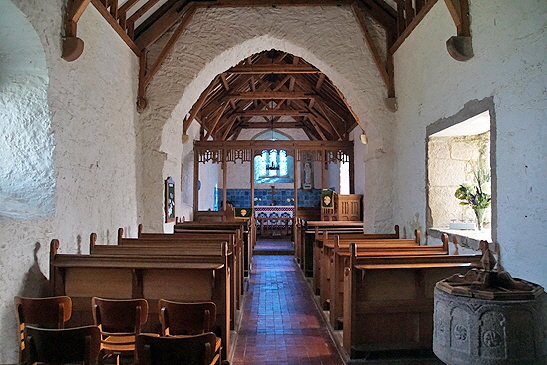 |
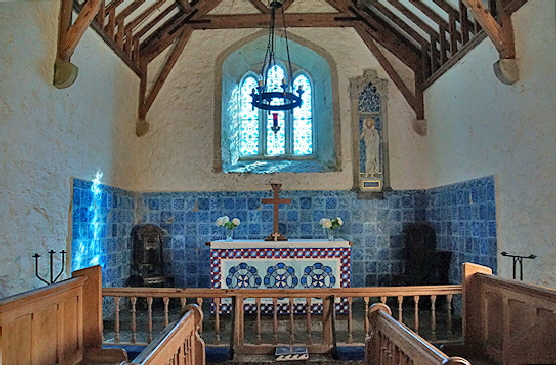 |
|
Left: Looking east. We can say with absolute conviction that none of the wood is original, the church having been gutted by fire in the nineteen-eighties. The chancel arch is pointed so unlikely to be contemporary with the decidedly Romanesque font right front. Note the thickness of the masonry visible in the window rebate. Right: The chancel with its blue look! That east window might be thirteenth century. Note the niche to its right which is it likely to be fifteenth century with its little cusps. It is thought that there was a statue of St Patrick but that it was destroyed by Cromwell’s fine fellows. |
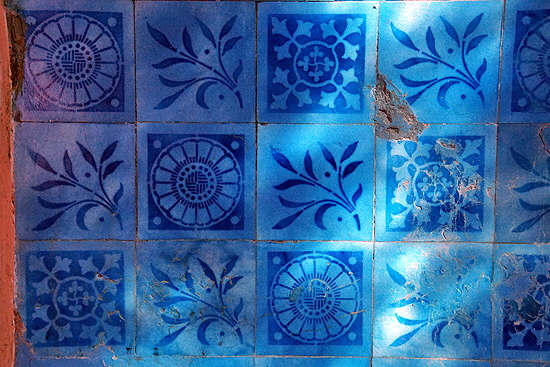 |
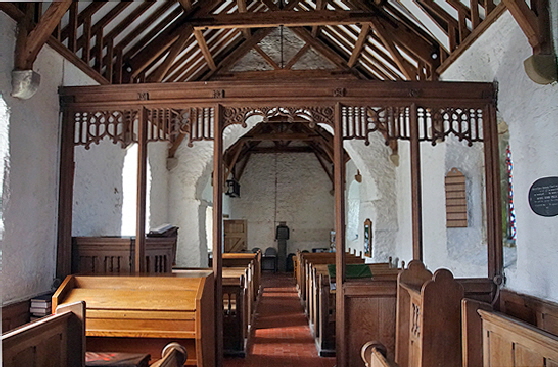 |
|
Left: The supposedly Muslim-influenced blue tiles of the east end. Right: Looking west through the rood screen. That screen is a whimsical addition. Such screens have had no liturgical purpose since the Reformation and this one, by definition, is a modern construct since any original one would have been destroyed in the fire. In fact it is not a rood screen at all because it hasn’t got a cross (a rood) nor ever had one! Moreover, it is in the wrong place. Any original screen would have been located within the chancel arch where it would have, as the name implies, screened the chancel from the nave. It is, let us face it, purely decorative and serves the purpose of separating the clergy seating from that of the great unwashed, so why not? When you look at the chancel arch, though, you can see how inordinately long the added chancel was. The re-builders clearly decided that the nave must have more space at the expense of the chancel and used the screen to effect that. Note in the centre of the west wall the icthus stone. |
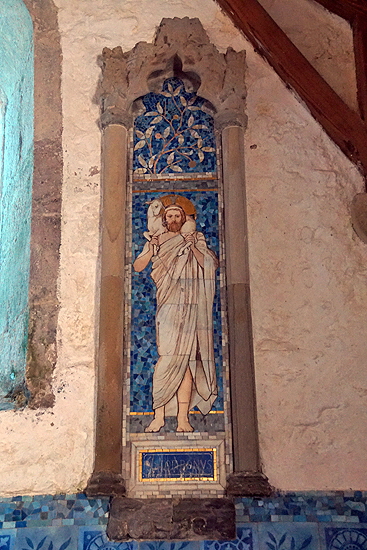 |
|||||||||||||
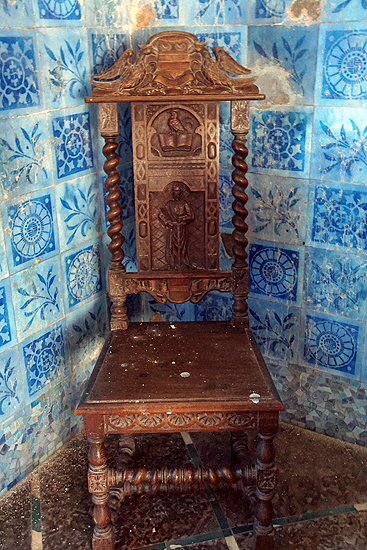 |
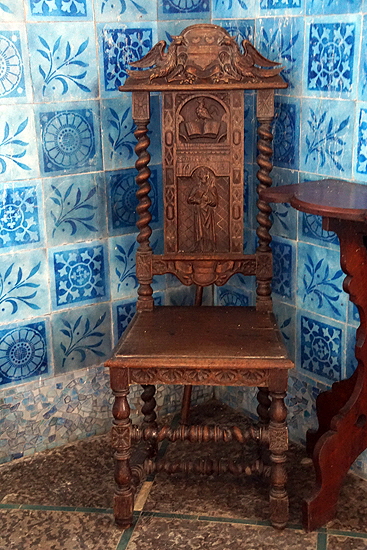 |
||||||||||||
|
Left and Centre: A couple of nice carved chairs near the altar. They are obviously old and, again because of the fire, not originally from here! Where are they from? Those coats of arms will be a clue for someone, I reckon. Right: The niche - or rather the ex-niche- to the right of the altar. The canopy is a bit battered and during one of the restorations someone clearly decided to insert this flat representation of Christ as the Good Shepherd in a pre-Raphaelite style. It is actually rather nice. We can safely say that it was not put here at the time of Lord Stanley’s renovations! He will be asking for his money back, I reckon. Note that stone at the foot of the niche which actually is not part of it... see below |
|||||||||||||
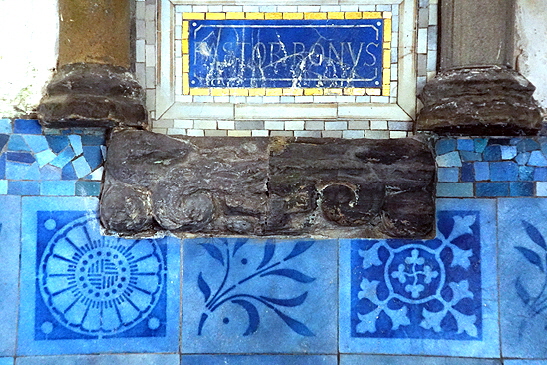 |
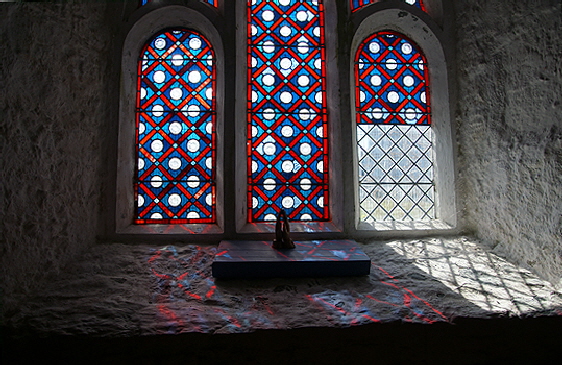 |
||||||||||||
|
Left: The stone below the niche. I know it looks uninteresting but it is decorated with serpents that some think might refer to St Paddy’s banishment of snakes from Guinness Island. Does that make sense? Well, yes, I think it does. There is no other decorative sculpture in this church and in the other tiny churches I visited on the island there were none either. It is a reasonable assumption then that this piece, then, had some significance beyond pure decoration. Then let us think about why this church is here. Was it originally a parish church as we would think of one? In this exposed spot with little or no population around it? With the legend of St Patrick or even the reality of St Patrick in its provenance this was without any shadow of doubt a place of pilgrimage whether or not there was a parish church function as well. It could hardly not be a pilgrimage destination (pilgrimage being a lucrative business) and we can be sure that whoever owned or patronised this church would have made sure that there was suitable Patrick memorabilia and decoration to enhance the “pilgrim experience”. Right: Reflections of an ancient church. This is another triple window in the south wall. I have already explained why this would not have been original due to the need for small windows when glass was unaffordable. |
|||||||||||||
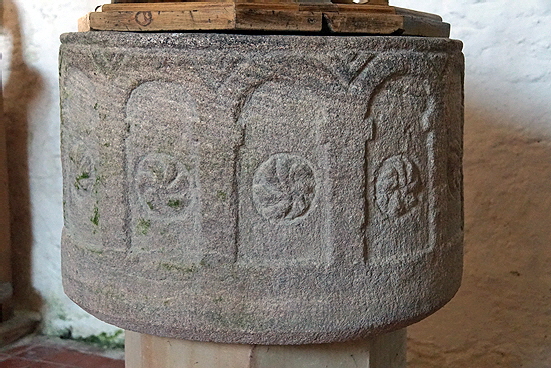 |
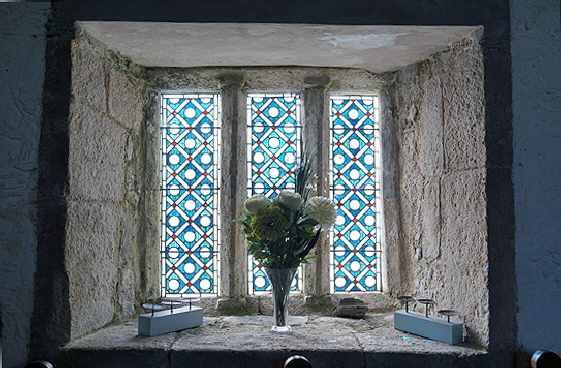 |
||||||||||||
|
Left: There are a few Romanesque fonts on the island and Llanbadrig’s is one of three I managed to see. The arrangement of “blind” Romanesque arches - common throughout England - is the real giveaway. Within it are simple stylised “flowers”. Right: Another Stanley-inspired window in the south side of the nave. This time it is a rectangular opening that looks from the Tudor era. But who knows? |
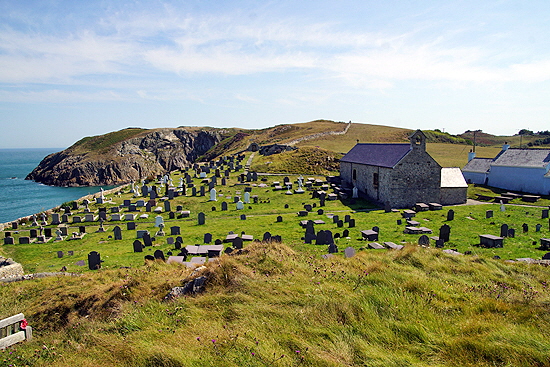 |
||||||
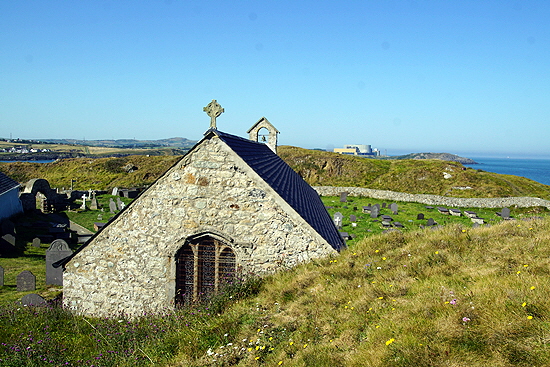 |
||||||
|
Left: Ancient and Modern. Functioning and Redundant. You can see from this picture how embedded the chancel is into the rocks around. Beyond, in the distance, is the now-disused Wylfa nuclear power station. The church has been here for about nine hundred years performing its function. The power station - two magnox reactors - lasted for forty four years, opening in 1971 and ceasing generation in 2015. Right: The church from the north west. The churchyard is actually rather large and you can see why. I think I wouldn’t mind being interred in a place like this! The churchyard is a very irregular shape adapting itself to the available space between rocks and hills. Such shapes often denote pre-Christian sites. Was this one such? |
||||||
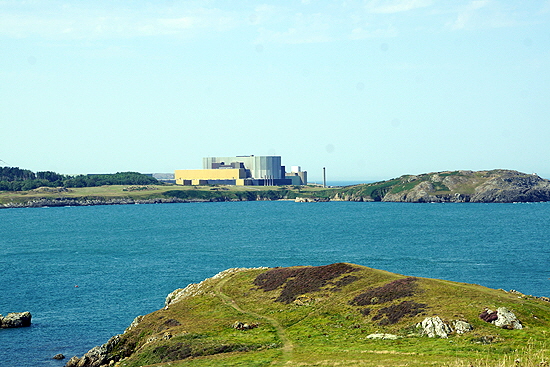 |
||||||
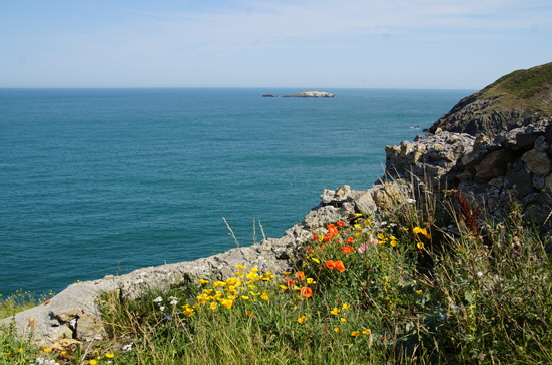 |
||||||
|
Left: The Wylfa plant seen from west of the church. If you look closely you will see fish with three eyes. Right: Wild flowers and Ynys Padrig. And did those feet in ancient times...? |
|
|
||||||||||||||||||||||||||||||||||||||||
|
Byzantium - the Eastern Roman Empire that far outlived its Western counterpart - were Orthodox Christians, not Roman Catholics. And most of us know that the Orthodox churches use icons as a central part of their liturgy. They are venerated as the embodiment of the holy figures depicted. The problem came after the emergence of Islam. With Byzantine territories falling like dominoes to races and tribes that had embraced the newfangled religion, the rulers of the Empire looked for answers. Why had God forsaken them? The answer they came up with was that he was angry at their icons and the supposed breach of the Second Commandment. One can only speculate that the soul searching was the worse for knowing that Islam itself forbade such imagery. Between AD726-87 and again between AD814-42 icons were forbidden and destroyed; which is where we get the now more widely-used word iconoclasm of course. To paint an icon at that time was to risk execution. In England the zeal of our native iconoclasts led to the bizarre situation where on bench poppy heads, for example, the faces of saints and angles were defaced while those of monsters and dragons were left alone. Much art was destroyed. Nowadays that all seems very odd, and the Victorians retaliated by smothering our churches with grim and meretricious industrial stained glass with scenes from the Bible. Latterly, we are even seeing the re-emergence of cheesy statuettes of the Virgin Mary. Of course, in Roman Catholic Europe this stuff never went away. In a shop in Assisi I remember seeing a Eu5000 gilt statue of the Virgin next to a Eu2 fridge magnet of a nun pulling up her habit to reveal her knees. Maybe the iconoclasts were right. |
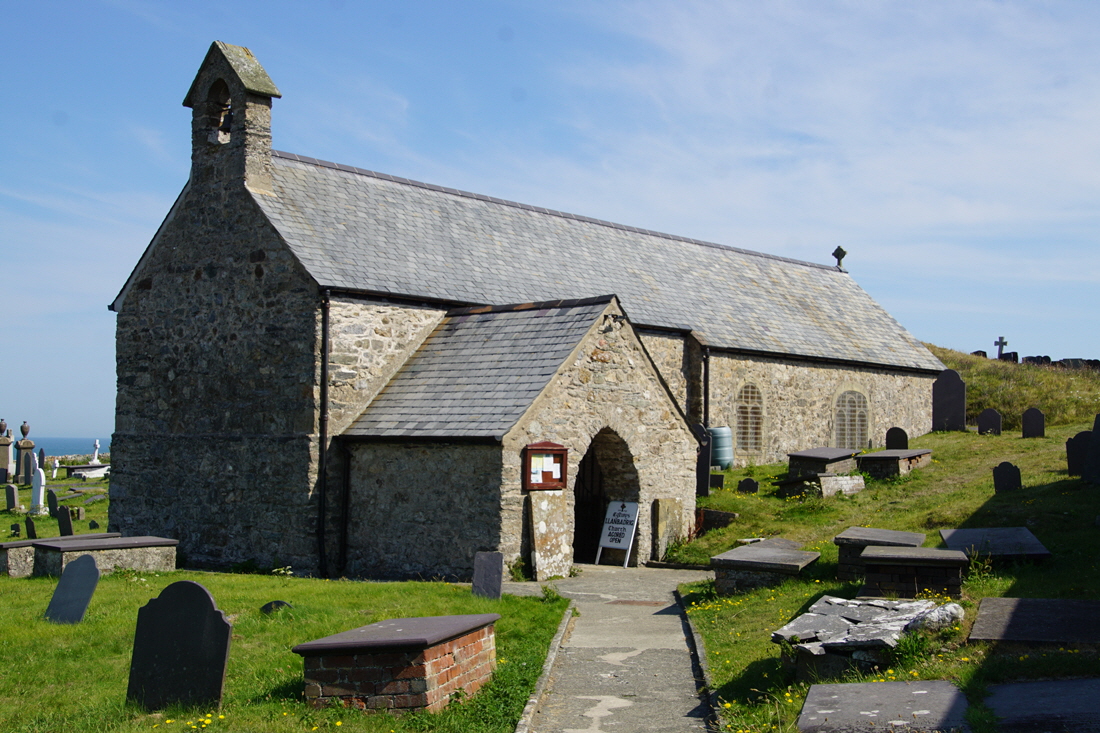 |
|||||
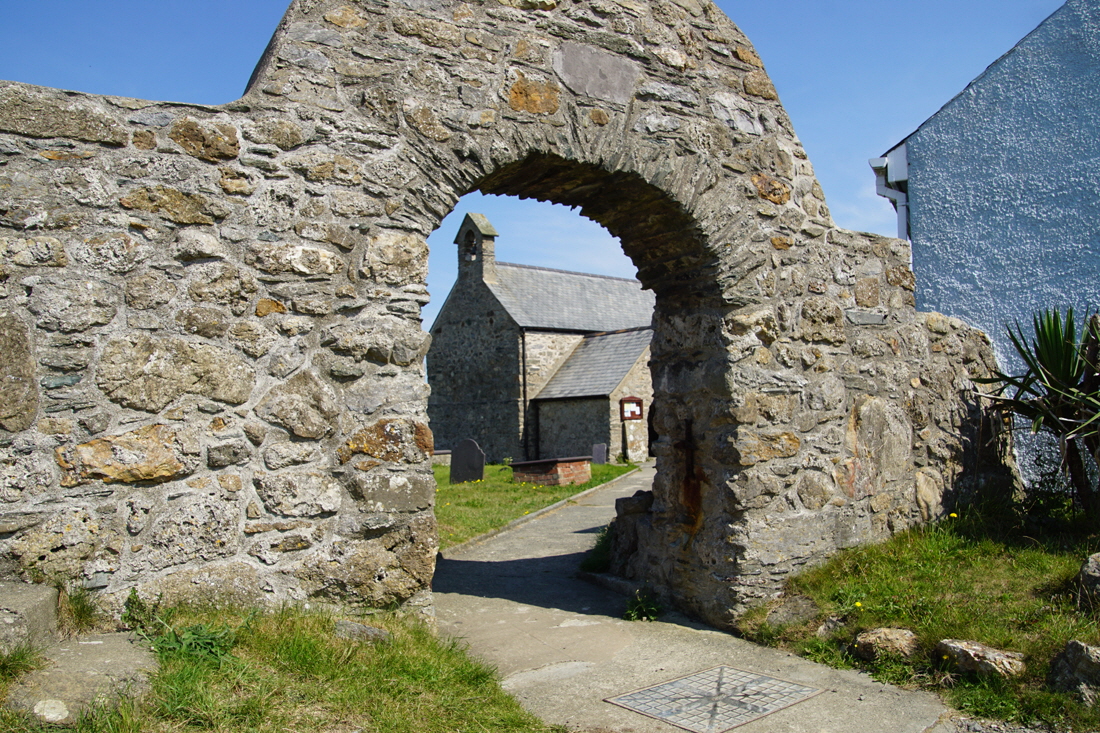 |
|||||
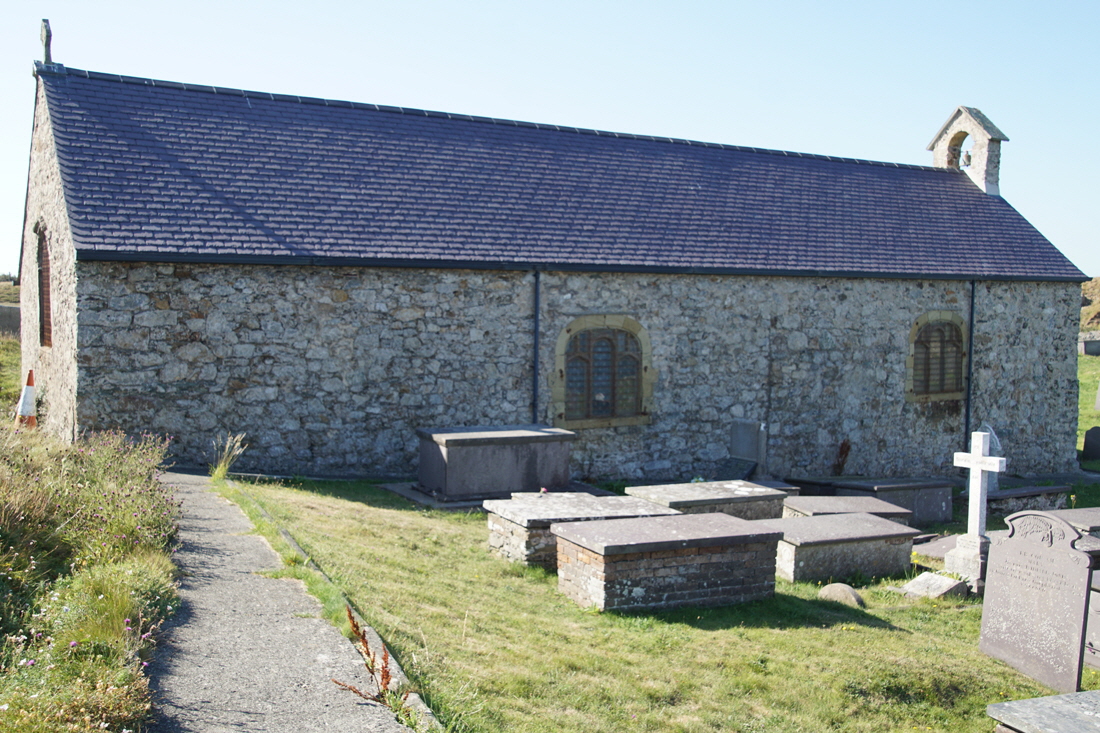 |
|||||
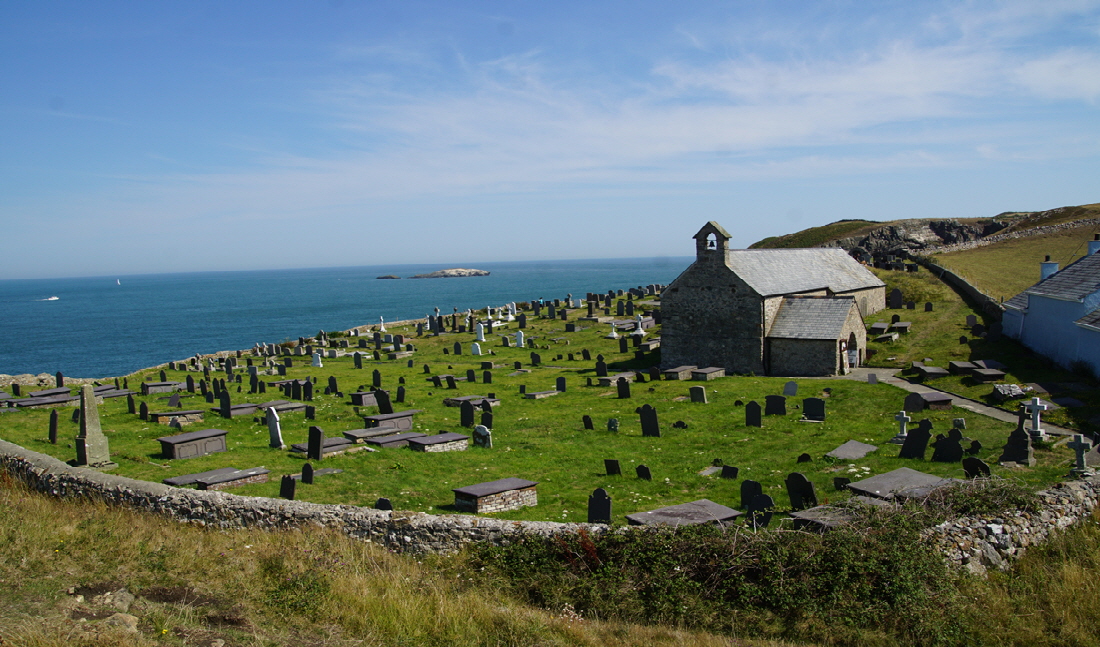 |
|||||
|
|
|||||
